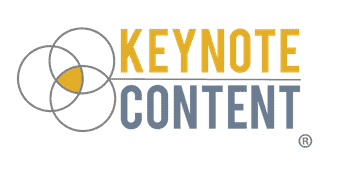It’s Time to Say Goodbye to Inbound Marketing as We Know It
Imagine you’re at a dinner party and someone asks you about your upcoming backpacking trip to Rocky Mountain National Park. Before you can respond, they then proceed to ask you three more questions, share a story about their time at RMNP, mention a website you “absolutely must check out,” and then, since they’re a part-time backpacking guide, ask you if you want them to lead your trip.
Maybe you’re interested in what they’re offering, but it doesn’t change the fact they really didn’t wait to learn more about your plans. Maybe you’re not looking for a guide — you’re wanting to do a solo trip. Or, maybe it’s not even a backpacking trip — you’re going to Estes Park with your family and may take a short hike or two in the area.
At best, the other person’s response is probably well-intended, but it seems like their initial question was really all about sharing their interests, not yours.
And yet, so many brands have thrived on a similar tactic: giving amazing helpful content without taking the time to confirm they understand exactly what their audience wants and needs. Let me be clear: inbound marketing in and of itself is here to stay, but the days of sending out content hoping it somehow connects with the right search users without listening, learning, and responding are now over.
We do need to acknowledge the importance of traditional inbound marketing. Creating blog articles, podcasts episodes, videos, email newsletters — all things content-related — is still a breath of fresh air compared to outdated, ineffective, and frankly, rude interruption-based marketing. The difference is we need to embrace a true conversation if we want to connect with our audience on a meaningful level.
What Is Conversational Marketing?
Conversational marketing is replacing traditional inbound marketing with a fresh, engaging context. We’re moving the dinner party with our audiences from the one-sided flood of information to a true conversation. It’s more natural, nuanced, and welcoming for our audience to experience. Lisa Gennaro of WPForms wrote an excellent article entitled “The Ultimate Guide to Conversational Marketing (+Examples)”. Gennaro gives one of the clearest definitions of conversational marketing I’ve seen so far:
“Conversational marketing is a new, personalized approach to doing business online. It moves buyers through marketing and sales funnels by using the power of one at a time questions, a lot like a real-time conversation.”
You’re already experiencing this shift, even if we’re still in the early adoption phase. Chatbots, Alexa, Siri, Google Home, AI-driven content based on user intent and action, algorithm changes that reflect long-tail keywords paired with your unique demographic data — it’s all creating a more personalized experience.
There are three key components when it comes to integrating this concept of conversational marketing into your communication strategy. Think of these components on a continuous wheel of upcycling your engagement with any specific prospect: Listen, Learn, Uniquely Respond.
01. Listen to what your prospect is actually saying.
Do you know why so many people currently hate using chatbots? It’s the same sentiment expressed when automated systems first launched in call centers: “I just want to speak to a human!” In fact, you may even have that same feeling calling your friendly nationwide wireless carrier.
Let’s flashback to the idea of creating high-quality relevant content. The relevancy of our content is based on a past event or experience: what someone upvoted yesterday, what’s trending on Twitter based on past user activity, what people searched for through BuzzSumo or SEOMoz this week. How do you know for certain that what you need to put out into the world is truly relevant to our audience’s interests?
You get closer to the source: direct responses. Surveys. Interviews. Testimonials. What do these all have in common? They pose questions for the respondent to give their perspective.
How many marketers are simply blasting content out there and not really paying attention to, “Is this what my audience is actually looking for right now?” Without knowing what your audience is saying and asking, it’s a guessing game — and an expensive, donkey-tail-pinning game at that.
Conversational marketing recognizes when to ask the right questions based on audience activity. You’ve probably already experienced this while reading a blog article or watching a video when a pop-up chatbot box appears. It shares a message along the lines of “What are some other questions you may have about (insert topic that article or video is about here)?”
A good chatbot will offer a few options of other questions you may have that show the creator understands your intent more based on you engaging with that piece of content. Instead of simply saying, “Here’s the information” without a conversation, it says, “I believe I recognize your intent. Let’s still keep creating that great content, like creating videos, podcasts, articles, and let’s put a conversational aspect to it.”
Unless you listen to your audience, study their intent, and recognize their actions, it will continue limiting the impact of your message. Listen first.
If you’d like to get better results for your business, take the first step here.
02. Learn your audience’s exact intent not based on your assumptions.
Once you listen, only then can you truly learn. Anyone who’s been married for more than eight seconds understands that concept. Simply having a chatbot connected to your website doesn’t guarantee you’re actually learning from your audience or even participating in conversational marketing. Does your conversational marketing approach truly engage your audience with the intent of learning, not just intaking information?
When your audience engages with your brand in a true conversation, whether DM, chatbot, quiz, survey, whatever it may be, how are you curating their insight for greater learning? The organic fragility of a new conversation with a prospective buyer cannot be underappreciated. You must reflect back to your prospect that you’re fully present in truly learning from their intent:
- What are the driving forces behind their exact answers?
- Why would they ask that specific question?
- What led them to click on that series of posts or pages to reach this conversation?
Until you take the time to learn from your audience, it’s next to impossible to serve them with a meaningful experience. Listening and learning set the table for you to create a remarkable conversation.
03. Give a unique response. No cookie-cutter answers allowed.
A unique response answers the question, “How do I give them what they’re looking for in a way that will be unique to what they’ve already told me?” Your audience already took the time to share their perspective and details that matter to them. Your unique response proves that you valued their insight, processed what they had to say, and volleyed back an idea or suggestion based on what matters to them. It digitizes active listening.
Why aren’t more marketing campaigns built on customized or conversational marketing principles? It’s harder to do. It takes more time. It’s not the fastest way…because it’s not supposed to be the fastest way. Conversational marketing is a tectonic shift in the marketing landscape that starts with inbound interest and thrives on intent-driven responses. The passivity of email is already far outpaced by the immediacy and conversational context of direct messenger. User-specific ads are making billboards and sidebar ads more like wallpaper than ever before now.
It’s time to reset how we interact with our audiences. No more one-way streets. No more content avalanches burying our prospective buyers under wave after wave of videos, articles, and posts well before they asked for any of it. No more shouting into the darkness hoping our message resonates with the right people. It’s time to start a meaningful conversation with the people you want to serve.
Listen, learn, uniquely respond.
If you’d like to get better results for your business, take the first step here.

